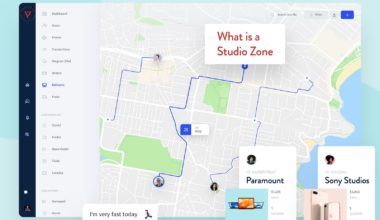I hate to be a buzzkill, but a 3d scanned house NFT is a better investment than virtual property next to Snoop Dogg’s Metaverse Mansion.
The reason? Snoop Dogg’s platform, Sandbox, isn’t the metaverse. Hell, Meta isn’t the metaverse. One is a culture-moving video game, and the other is an embarrassing marketing stunt.
There is still a lot of debate on what the metaverse is, but there really shouldn’t be. The answer is clear, and all the big players secretly know it – including Meta. When you learn what they are actually building, you’ll see why Investing in 3D scanning services to mint your home or business will have exponentially more utility in the metaverse.
What is The Metaverse, Really?
Most metaverse definitions describe it as the sum of AR, VR, 5G, and the Internet of Things. This approach leaves us confused because it does not explain its utility.
Instead, a metaverse is simply a layer of reality that we use to access lower layers. We already live in a metaverse. It is called earth. Every time we use our phones to engage with a lower layer of digital information, we transport from the physical world to the digital. So even if we build a virtual map that holds other virtual realities, it can’t supersede the physical metaverse we presently live in.
But there is a problem with how our physical world intersects with the digital. It’s unnatural. It keeps chiropractors in business, drives people into isolated political echo chambers, and bottlenecks human creativity.
There are three responses to this problem.
First, you disengage entirely with physical reality by uploading your consciousness into a dystopian virtual metaverse. Second, you adopt a luddite perspective and try to eradicate the digitization of human creativity. And third, you marry the physical and digital so that the transition between the two is seamless and natural.
My bet is on the last option. And so are Meta, Google, and Apple’s.
So instead of building the virtual world of virtual worlds, the question then becomes, how do we make virtual worlds more accessible in physical reality?
In this context, the lowercase (m) metaverse should be defined as the marriage between the digital and physical.
This idea is nothing new, though. For years, investment and consulting firms have been using a different name: the augmented reality cloud.
How The AR Cloud Will Support the Metaverse
The AR cloud is the data and technology needed to expand our screens’ existing virtual entry points to everything within sight and touch. This is where I lose people, so let me use a real-life example.
During the Covid-19 lockdowns, the band, Glass Animals, performed a live music video over Zoom. Despite the band’s clever attempts to connect with their fans, the experience couldn’t substitute the actual human-to-human contact that a live concert provides.
Imagine if Glass Animals created a live augmented experience in multiple city parks where people could gather together in socially distanced pods instead of broadcasting into people’s homes. The artists would be able to create never-before-seen visual effects that make it look like they are playing on the Santa Monica Pier and Times Square simultaneously. Their fans would then use their phones or AR glasses to experience the digital art created exclusively for those spaces.
For artists to create these experiences, they need a set of protocols that enable the different elements of the AR experience to speak to each other. The number of essential building blocks is too long to list here, but the AR cloud organizes these elements into a cohesive architecture.
The business applications are endless. Companies are already using elements like lidar scanning and SLAM algorithms to create digital twins of manufacturing plants. These twins are then used to simulate real-time production to innovate efficiency solutions that can be tested before implementation.
Right now, many of the essential elements of the AR cloud are still siloed, but companies are in a full sprint to connect them. Whoever is first will own the most significant revenue streams of the AR cloud.
Why 3D Scanning is the Most Critical Element of the Metaverse
Of all the elements needed to make the metaverse a reality, 3D scanning is the one that makes or breaks this vision. Without this data, we cannot fill the earth with our digital creations. If we are sticking with the marriage analogy, it’s what consummates the union…
And GPS isn’t enough. It can only locate data points within 1 square meter of accuracy. It needs to be 100 times more accurate with 3D spatial awareness.
There are many approaches to building this. One is to construct intensive surveillance infrastructure that continually updates a live 3D map. Scape Technologies attempted to do this but was bought out by Facebook, now Meta, in 2020. And it is unclear if Meta is still using this approach.
Another approach is to crowdsource the data through users. In 2019 Facebook announced that it plans to do this when launching its AR glasses. Niantic also uses this method for Pokemon Go.
The problem with crowdsourcing the data through user engagement is that it lacks total accuracy for complete immersion. For example, in Pokemon Go, spatial data is collected every time someone uses their device to find a Pokemon. But the data only represents a small piece of the puzzle. Niantic needs multiple users to fill in the gaps.
Another problem with crowdsourcing is that it conflicts with data and privacy rights. Apps will need permission to use the spatial anchoring data they collect from their users. And once it is clear how valuable that data is to build a shared reality, users will undoubtedly want to share in that monetization.
But if regular people, including property and business owners, see the future value of 3D scanned House NFTs now, they will be able to jump on the opportunity early.
How your House NFT will Have Utility in the Augmented Metaverse
However the augmented metaverse arrives, it is clear that 3D scans will be its foundation. Minting a scan of your house or business into an NFT will provide value because it connects that foundational data with a digital record of ownership.
This NFT could have endless applications. First, it could increase the value of a property sale. But secondly, it gives you the authority to allow or disallow user engagement with your spatial data.
Imagine if Snoop Dogg minted a 3D scan of his house instead of a virtual recreation. And in the future, he commissioned a Beeple style artist to project a 3D model of his head to the top of his metaverse mansion. The artist would benefit from the exposure, and Snoop Dogg could use his house NFT as the basis of a smart contract that divides profit sharing between Snoop and the artist.
There would be a few requirements for this house NFT to have lasting utility. First, a lidar camera would be required because the scan needs spatial awareness data that can API with AR cloud anchors. And secondly, the NFT would need cross-chain functionality.
This industry is still in its early stages, and it is impossible to predict exactly who will own the AR cloud and how it will intersect with blockchain technology. Either way, it is a safe bet that blockchain will be needed to establish property rights in the metaverse. So an NFT that can communicate ownership rights across multiple blockchains is your best bet.
Present Day Examples and The Future of House NFTs in the Metaverse
ONE Sotheby’s International Realty and Voxel Architects have already embarked on this journey. They are building a home that will span 11,000 square feet and include seven bedrooms and nine bathrooms. Voxel plans to scan the property and mint it as an NFT that will live in the Sandbox virtual world.
It seems that virtual reality like the Sandbox and Meta Horizons will serve as a branding substitute until the metaverse is fully realized. But for users of this augmented reality to have ownership and property rights, they need to take building the 3D map of the metaverse into their own hands. This will protect us from one entity monopolizing all of the spatial data in the metaverse.
If you want help scanning your property or business, we can help. We use state-of-the-art Matterport lidar cameras and even have connections to lawyers who provide legal NFT consultation.
Author
Our V7 own, John Luke Gilbert
https://twitter.com/JohnLukeGilbert







